By Steven Carlson, Curator.
Welcome to another EFFIEgram tracing the art and life of Arizona’s earliest Impressionist desert landscape painter - Effie Anderson Smith (1869-1955).
IN THIS EDITION:
An exciting exhibit celebrating some of today’s most accomplished Western Women Artists at the Desert Caballeros Western Museum in Wickenburg - Cowgirl Up!
- and -
Our new booklet celebrating Effie’s Desert Art - Pictures from the Desert
But first…
A Special Welcome to those of you receiving our EFFIEgram for the first time who signed up during our Benson Centennial Exhibit on March 2nd at which we were celebrating Effie’s 1926 solo art show there. We enjoyed meeting each and every one of you at the Benson Community Center as we brought Effie’s art home to the town where she got her start as a pioneer settler, newlywed, and very likely as an Arizona artist during her first year residing in the Arizona Territory (1895-96).
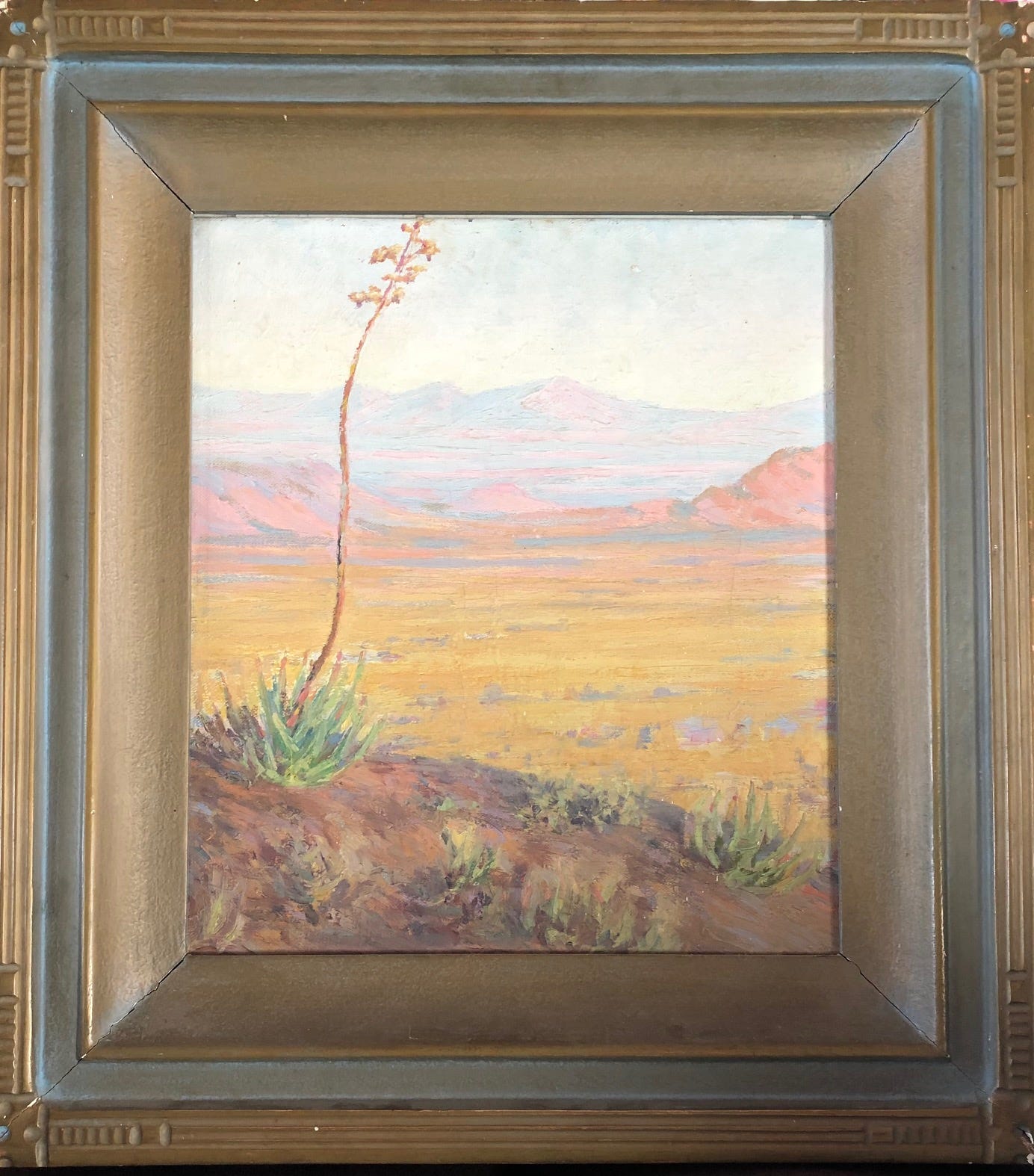
Paintings and Pictures
When the Smiths first arrived in the Arizona Territory, Effie and Andrew as newlyweds probably didn’t have the $ 25 of disposable income (on the salary of a railroad clerk) to buy luxury items like one of George Eastman’s new Kodak cameras with it’s amazing flexible film (invented in 1888) that would quickly enable ordinary people to begin capturing their everyday lives. But within a few years - circa 1903 - Effie, Andrew and son Lewis were established in Pearce where Andrew would work his way up from bookkeeper to Superintendent of the Commonwealth Silver Mine. Luxuries like a Kodak were now within the Smith’s means.

One of the first photos A.Y. captured of their lives was a glimpse of Effie on horseback - taking aim directly at the camera! It appears photography had become one of Andrew’s passions along with mining - and by default he was becoming Effie’s semi- official photographer.
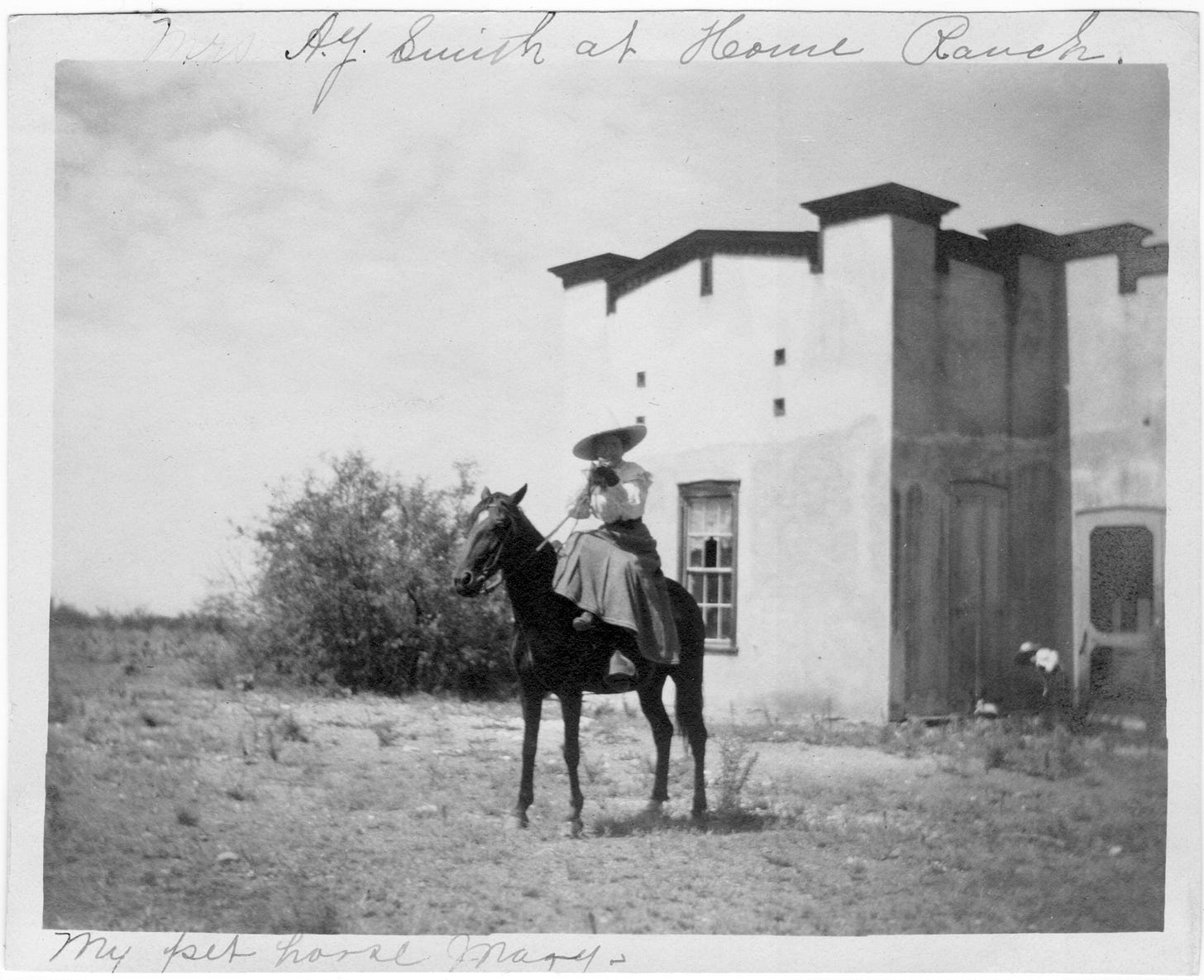
From Carriages to Cars
During this period the most common way for the Smiths and their friends to get around (aside from walking) was by carriage and wagon, or on horseback. I’m not going to try to create a narrative about Effie and her family’s history of horse and carriage ownership and the transition to automobiles, other than to say that the Smiths purchased their first car - a Stevens-Duryea - around 1905 from the Southern Arizona Auto Company in the neighboring copper mining camp at Courtland (now a ghost town). And yet, without any paved roads, having at least one horse was still a necessity and often the more reliable way to get around. Especially when winter moisture or summer monsoons caused dirt roads to become muddy, slippery and virtually impassible for automobiles.
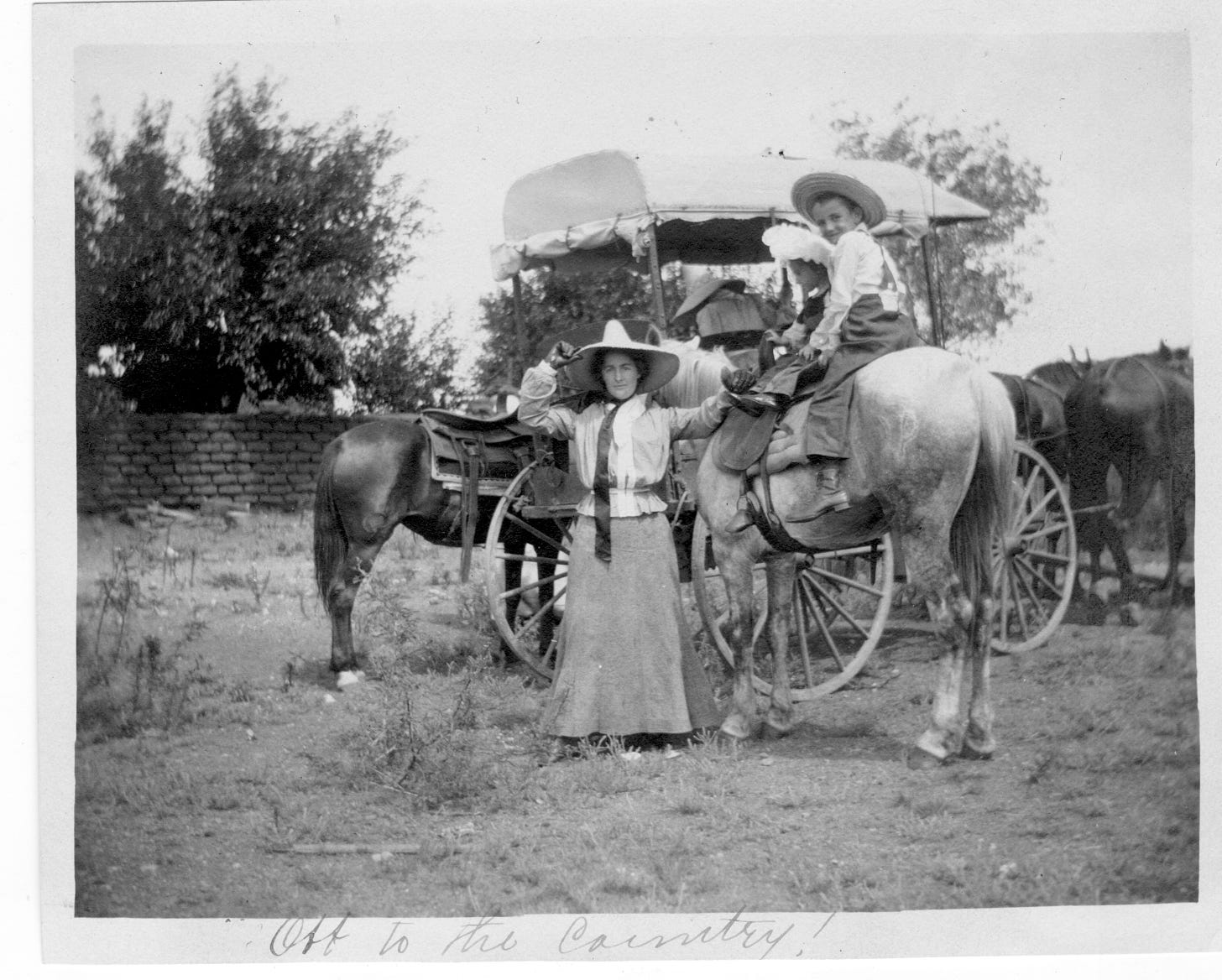
It is known that Effie often accompanied her husband Andrew on horseback during his exploration of the surrounding countryside with his prospecting and mining activities. And on those occasions Effie is said to have been sketching scenes she would later return to with easel and paints.

Effie’s son Lewis (Uncle Lewis to me) told me that his mother would regularly try to spend a day out somewhere within range of their house in Pearce - setting up and painting en plein air. By age 5, young Lewis was often prepared to go along - be it on horseback or in a carriage. Lewis would play nearby while Effie would capture some new vista on canvas - or respond emotionally again to a familiar scene in that day’s color and light and mood. Her most frequent subjects included Cochise Stronghold in the Dragoon Mountains to the west, the Chiricahua Mountains to the east, or another depiction of The Old Yucca that stood between her house and the Stronghold.
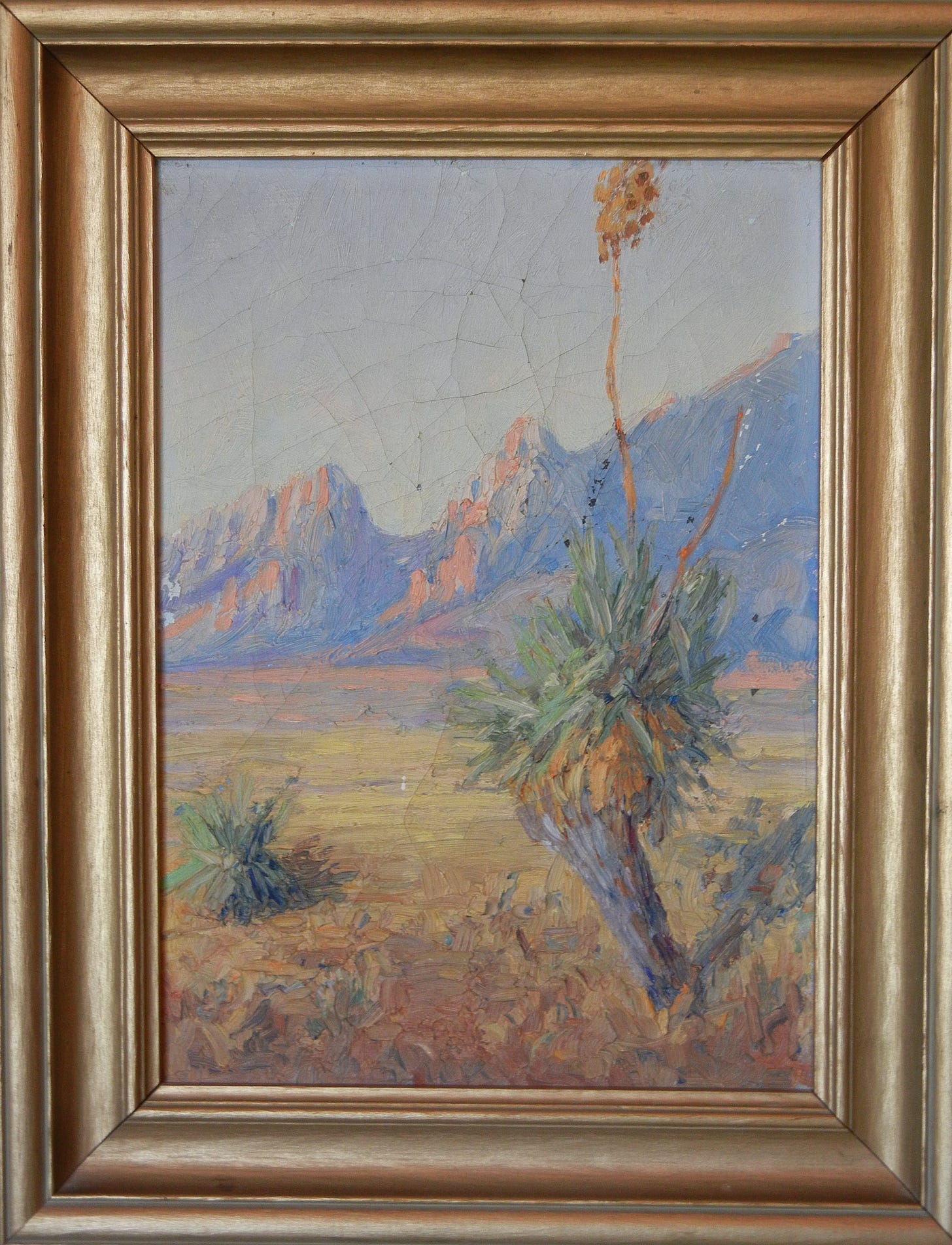
March being Woman’s History Month - we should remind ourselves that it was not only the sight of a woman driving a car in this era that was shattering norms in a male dominated activity. In many cultures a young woman riding a horse - alone - without the presence of one or more adult males - was a challenge to patriarchal values. There’s a fabulous history of Women on Horseback and associated cultural expectations through the ages on Wikipedia which may astound and surprise you.
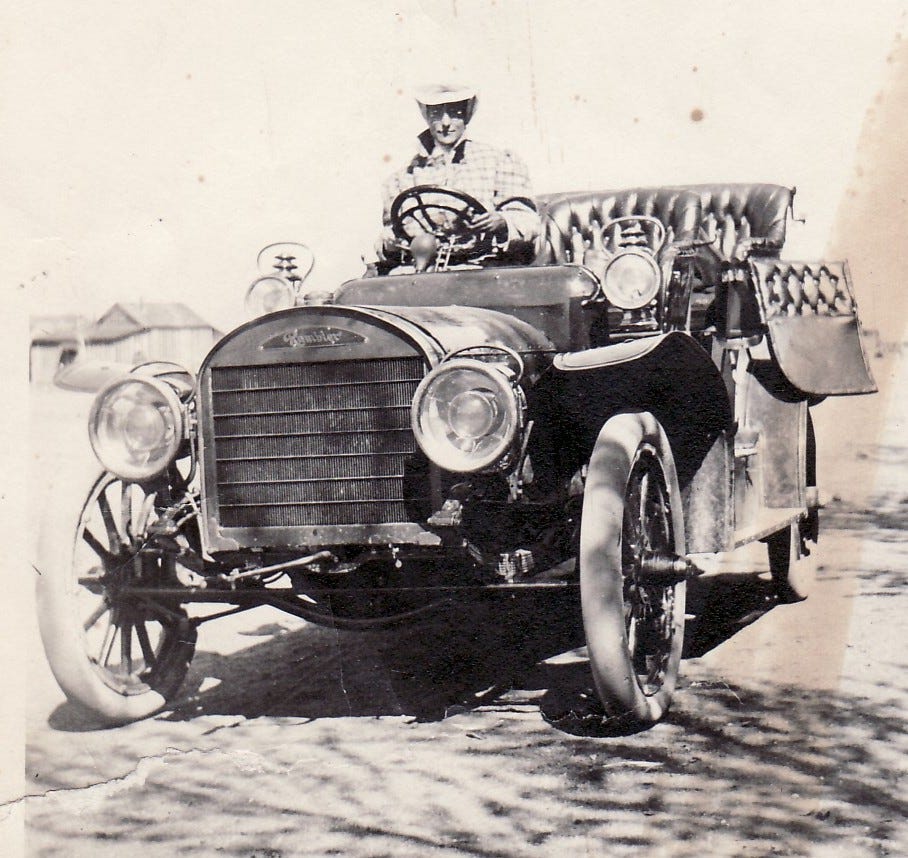
Cowgirls and Cowbelles
As much as Effie embraced life in the Arizona Territory and identified herself as a westerner it seems to have been clear to all around her that Effie was a very traditional southern lady in the Arizona desert with her charming manners and love of family life. So it’s difficult to place her firmly among the ranks of cowgirls and that lore, though she probably admired their independence - something she long sought herself through her life as an artist.
Effie was often referred to as Smithy among close friends - a combination of her first and married surnames - which she seems to have fully embraced, showing a less formal side of herself than the frequent references to her in newspapers and public settings as Mrs. A.Y. Smith.
Given that the Smiths attended church and other social activities in Tombstone during their first decade residing in Pearce, it’s very likely Effie was personally acquainted with at least one or two cowgirls. Among her adult art students in Douglas was at least one member of the club founded there known as the Cowbelles which over more than seven decades has spread across the country as a social and civic organization for women. That’s not to say cowgirls and cowbelles are the same, but perhaps some degree of concentric circles meet there.
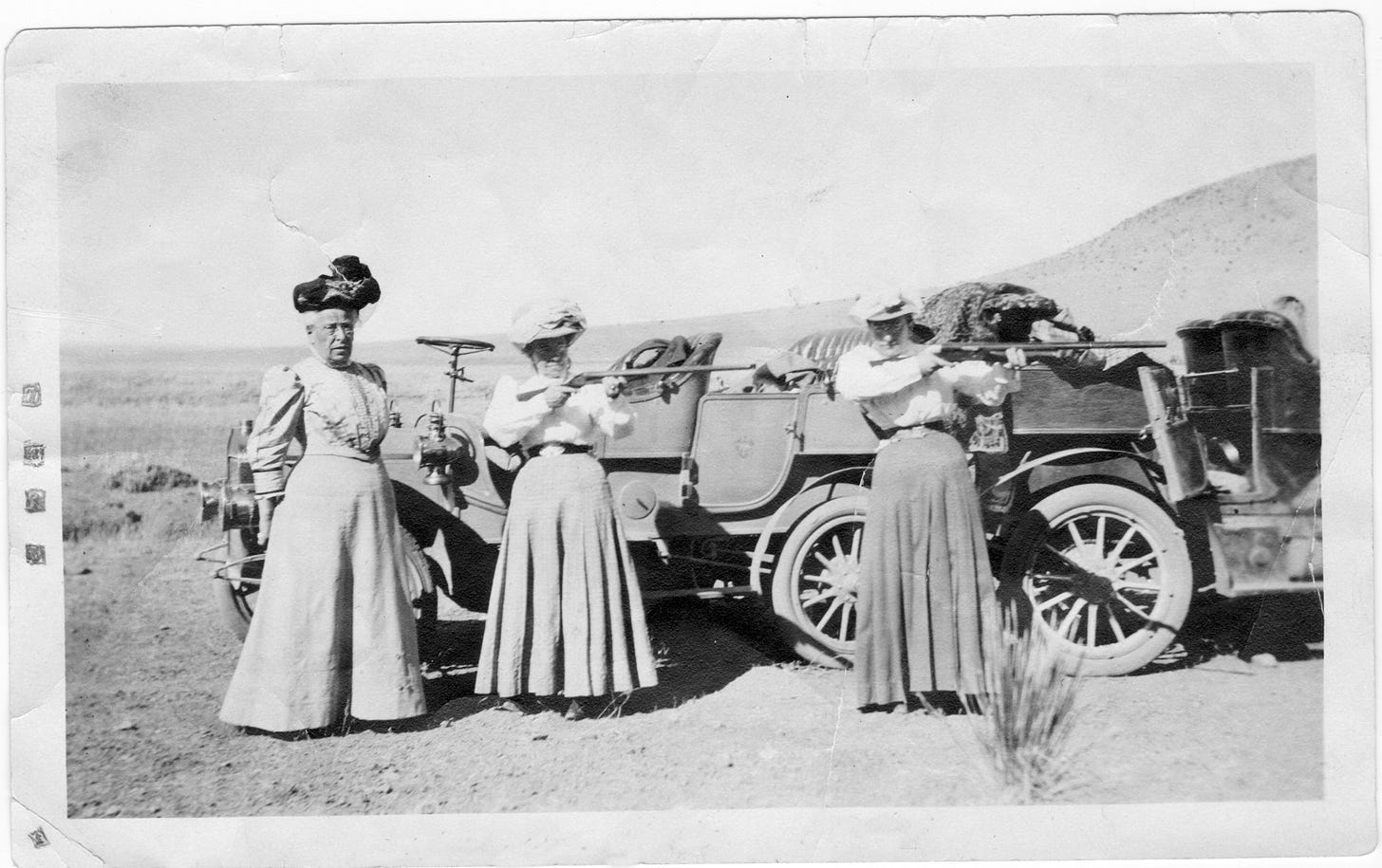
Effie certainly socialized easily with both mining and ranching families in the area. This is evidenced by the fact that so many of her paintings are still in the hands of the pioneer families and their descendants of Southern Arizona - very often ranchers.
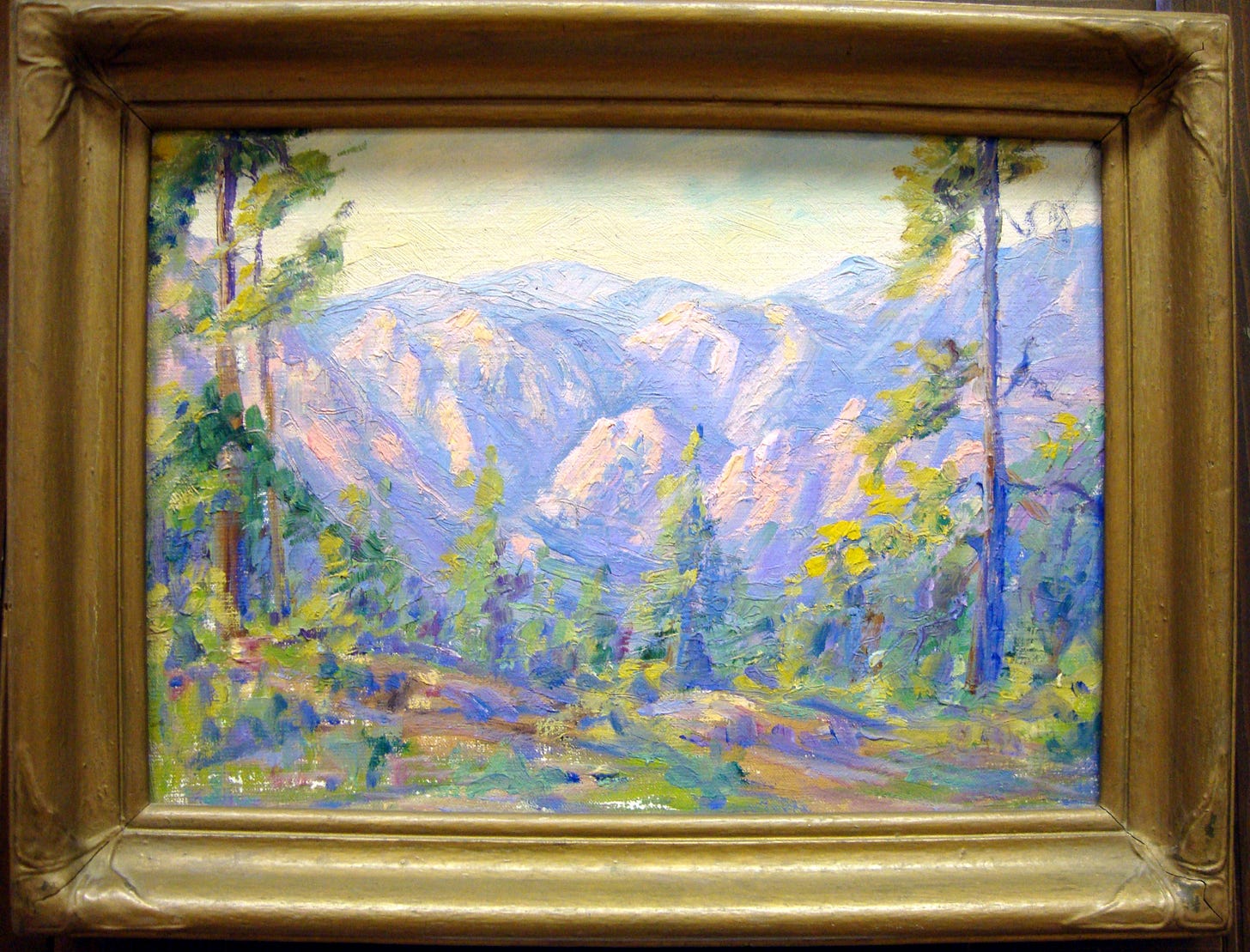
Art for Everyone
By the 1920s - now in her 50s - Effie was so associated with her growing reputation as a desert artist of note that her husband’s entry into cattle ranching with the purchase of a nearby ranch and his founding of the Coronado Cattle Company in the years following the decline of the Commonwealth Mine in the 1920s did not at all alter Effie’s already established trajectory with her desert art being the center of her life and reputation - and how people most often identified her.
Still, she is known to have encouraged her students to learn from her and then follow their own paths. More than one of her students are known to have included figures (a cowboy on a horse) in their landscapes.
Effie purposely remained focused on the desert in her art - the raw natural beauty of Arizona without any signs of human activity or intervention. She devoted much of her time in the civic and public sphere to further opportunities for people of all ages to see her desert art as an encouragement to try painting desert scenes themselves.
During the 1920s and 30s her role as Art Chairman of the Southern Arizona District of the Woman’s Clubs across that state included talks on Arizona color and an exhibit of around 20 paintings - usually with a demonstration of how to get started in painting.
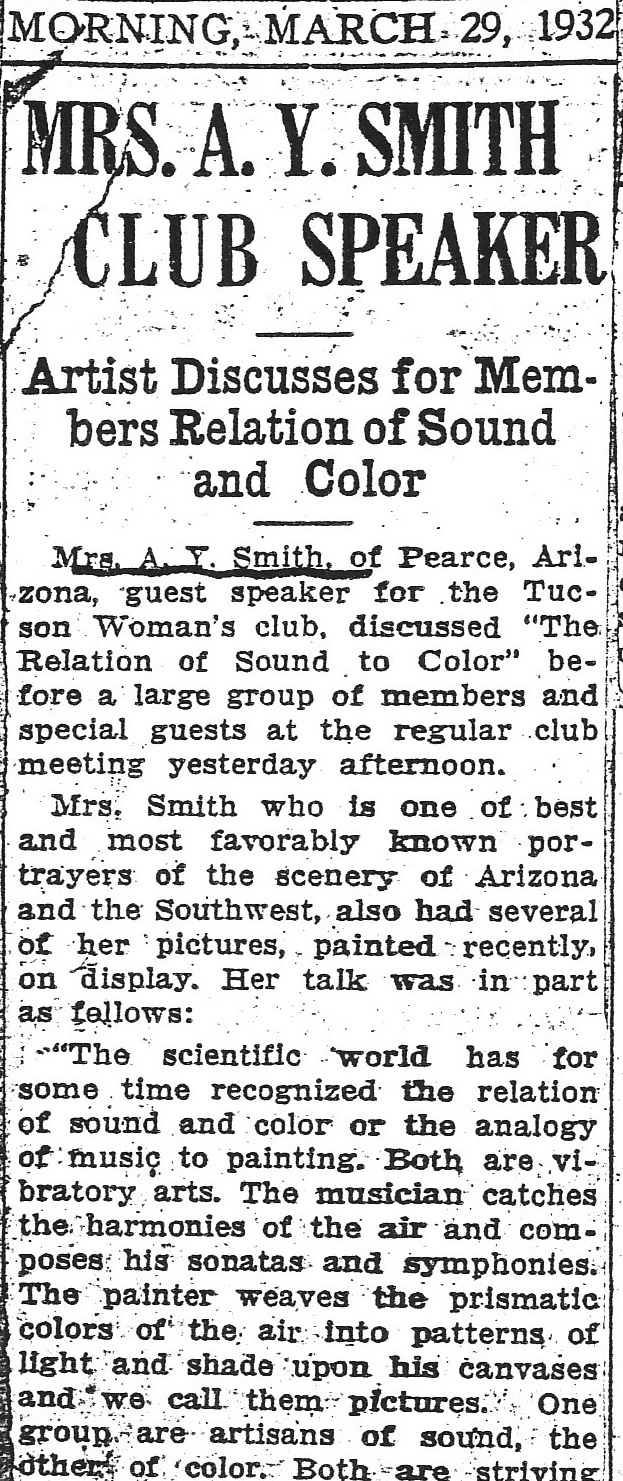
Not only was she encouraging middle aged women to take up the brush as a means of self expression in her Palette and Brush Club meetings in the homes of prominent Douglas women in the mid 1940s, she had been presenting art classes and individual lessons in drawing and painting to college students in Tucson and Douglas and to school aged children in small communities across Cochise County for many years.

An Arkansan by birth with small town roots, and an Arizonan by adoption, Effie seems to have been comfortable moving within many social circles of her day as a pioneer settler of Cochise County. Her activities as an artist, school teacher, Sunday School teacher, public speaker on art, political campaigner, and as a member of many civic groups all gave Effie the ability to relate to a wide range of people, especially anytime art was a topic of conversation.
Celebrating Today’s Western Women Artists - Cowgirl Up!
I’m sure Aunt Effie would be intrigued by this amazing annual celebration of the art of active women artists - now in its 20th year! - at Wickenburg’s iconic Desert Caballeros Western Museum. The Opening Weekend begins THIS FRIDAY March 28th and runs through Sunday, March 30th - with the exhibit on view until May 25th.
This is a fabulous opportunity to see the very best in Southwestern art by many of today’s most accomplished women artists. Take a moment to read about these meritorious women and enjoy their stunning creativity. (scroll down the page)
If you visited the Desert Caballeros Western Museum some time ago and think you know what’s there - YOU ARE OVERDUE FOR A RETURN VISIT !! The museum has greatly expanded - not just in exhibit space but in the range and scope of its exhibits of western history and western art - and more is on the horizon!
Desert Caballeros Western Museum is becoming the Center for the Study and Exhibiting of art by Western Women Artists - especially those tenacious pioneering early Arizona women artists of the territorial and early statehood years - like Effie Anderson Smith. Suffice it to say…
If you can’t make it to the Cowgirl Up! Opening Weekend festivities, this exhibit will be on view through May 25th.
I’m going for some of the Opening Weekend festivities myself on Saturday.
Perhaps I’ll see you there!
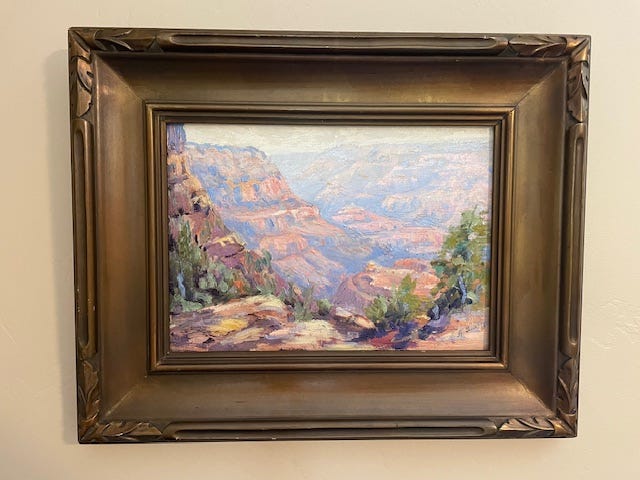
Thank you for your interest in the Dean of Arizona Women Artists, Pioneer Painter Effie Anderson Smith (1869-1955).
PLEASE SHARE THIS EFFIEgram with a friend and help us raise awareness and appreciation for the art of Arizona’s earliest Impressionist desert landscape painter.
We invite you to SUPPORT OUR EXHIBITS and ART CONSERVATION efforts, by making a tax deductible donation to the Effie Anderson Smith Museum & Archive, a 501c3 nonprofit organization at our website. Just click the link button below.
We are grateful for your donations in any amount. THANKS for YOUR SUPPORT!
Now available from the Effie Anderson Smith Museum and Archive…





